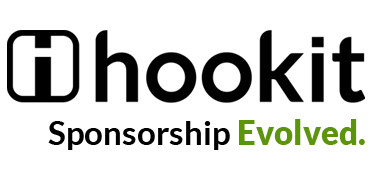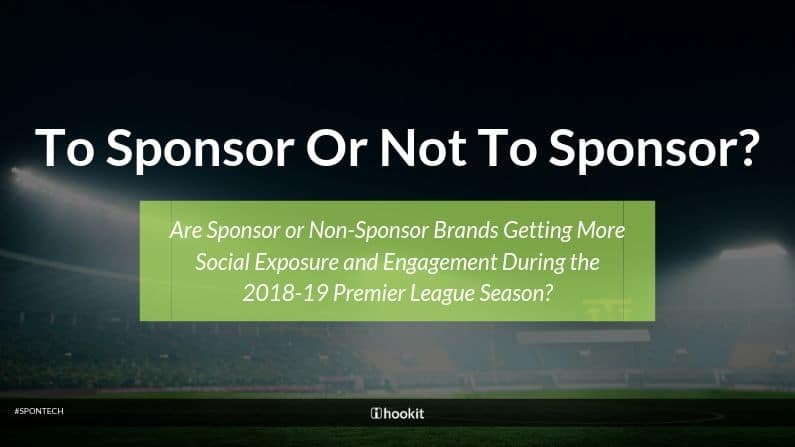When brands attach themselves to popular teams, leagues, or events through sponsorship, these brands hope to adopt more meaning in the minds of consumers. Today, the English Premier League (EPL) – with over 94M followers across YouTube, Twitter, Facebook, and Instagram1 – is effective in reaching a wide audience through social media. Brands have taken advantage of this, accessing their target demographic both through official Premier League league and team accounts. However, beyond promoting the sponsored brands, the Premier League and teams also talk about current events and other popular brands on social media. We analyzed which brands were the most talked about and which got the most engagement on posts about them by the Premier League and the teams in the league.
As reported on PremierLeague.com, the EPL entered the 2019 season with 12 league-level partnerships. However, according to the Hookit database, the Premier League mentioned 85 brands on social media over the course of the season. Diving into the data, we compared the ratio of posts, interactions on those posts, and the views on the video posts for sponsors to non-sponsors exclusively looking at text mentions of brands by official social accounts of teams and the league. Post interactions refers to the number of likes, comments, and shares across any social platform; high engagement typically indicates that a sponsorship is making an impact for a brand.
1 Official League accounts only

Although there were 6 sponsors that the Premier League didn’t mention at all on social media during the season (Avery Dennison, BBC Radio 5 Live, BBC Sport, BT Sport, Cadbury, Panini, Sky Sports), brands that were official sponsors still captured 48% of total posts, 67% of total interactions, and 22% of total views compared to posts for brands that were non-sponsors. Even so, that means that 52% of the posts made by the Premier League on social media about brands were about non-sponsors!
Branded Content on League Accounts

The top 5 brands that the Premier League generated engagement for were EA Sports, Barclays, Carling, Mondelez’s brand Cadbury, and Newcastle Brown Ale, with 10M, 6.5M, 3.1M, 1.8M, and 1.0M interactions, respectively. Of these 5, Carling and Newcastle Brown Ale were both non-sponsors, beating out 9 actual sponsors of the league, including Nike, Coca-Cola, and TAG Heuer, with 894K, 453K, and 67K interactions on branded posts, respectively.
Branded Content on Team Accounts

When it comes to teams promoting brands, Manchester United solidified their top position by generating almost 4M more interactions for their top brand than the runner-up, Liverpool, did for theirs. The brand with the most interactions generated by a team’s social media posts was Emirates with Manchester United at 21.3M interactions, followed by New Balance with Liverpool at 17.4M interactions. Surprisingly, none of these 5 most engaged brands from team promotions were league sponsors. Capturing two of the slots in the top 5, Emirates received a total of 34.7M video views from Manchester United and Arsenal – about 17.2M more views than New Balance, Standard Chartered, and Adidas received from their respective teams combined, showing that video content can drive more engagement than interactions on photos or text posts.
Although Premier League teams collectively mentioned 213 brands (with many teams mentioning the same brands), there were 260+ brand sponsors that weren’t mentioned by their respective Premier League team partners on social media. A handful of these sponsors were also Premier League sponsors and, although they may not have been mentioned by a particular team they sponsored, some were mentioned by other teams or on league accounts; other sponsors such as AT&T, Carlsberg, and Chevrolet weren’t mentioned on any accounts at all. Of the brands that were mentioned, however, posts by teams about non-sponsors typically drove high engagement, with a single post generating up to 316K interactions. Sponsors, on the other hand, received considerably less engagement on posts promoting their brand, garnering a maximum of 55.8K interactions on a single post. As a whole, this data suggests that the league and its teams should make more of an effort to drive engagement and value for their respective sponsors by creating more engaging branded posts for sponsors and reducing the number of branded posts about non-sponsors.
As more brands begin to give themselves a voice through avenues such as team and league sponsorships, there is a need to know the data behind their sponsorships and whether they are being effectively promoted by their partners. The right metrics and insights can help sponsor brands understand which of their sponsored properties are most effective and drive higher ROI. Sponsor brands can gain this competitive advantage by leveraging the Hookit platform to make effective sponsorship decisions and strategy.
Compare how the EPL balance sponsors vs non-sponsors to how the NBA and MLB do it.

Written by Hayley Pogue
Hayley is a rising senior and NCAA Div. 1 athlete at Bucknell University working towards a Bachelor of Science in Business Administration (BSBA) in Markets, Innovation, and Design. Her major deals with innovative product development, while her concentration in consumer analytics focuses on data’s role in the consumer experience. She has joined the Hookit team as a content marketing intern for the summer of 2019. To learn more about or connect with Hayley, please visit her LinkedIn.


